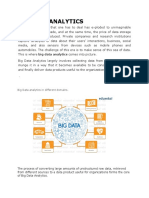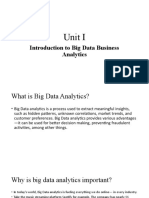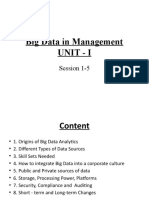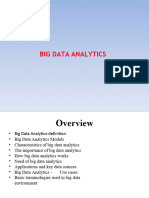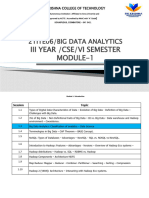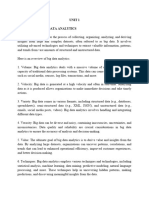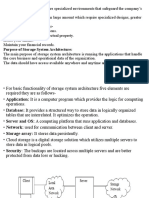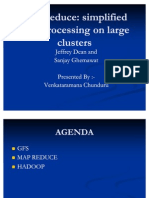0% found this document useful (0 votes)
45 views45 pages01 - Big Data Analytics - An Introduction
This document serves as an introduction to a course on Big Data Analytics, detailing the course objectives, structure, and evaluation methods. It covers essential topics such as the characteristics and benefits of big data, various types of analytics, and the data analytics lifecycle. Additionally, it provides recommended resources, code of conduct, and tools used in big data analytics.
Uploaded by
i237822Copyright
© © All Rights Reserved
We take content rights seriously. If you suspect this is your content, claim it here.
Available Formats
Download as PDF, TXT or read online on Scribd
0% found this document useful (0 votes)
45 views45 pages01 - Big Data Analytics - An Introduction
This document serves as an introduction to a course on Big Data Analytics, detailing the course objectives, structure, and evaluation methods. It covers essential topics such as the characteristics and benefits of big data, various types of analytics, and the data analytics lifecycle. Additionally, it provides recommended resources, code of conduct, and tools used in big data analytics.
Uploaded by
i237822Copyright
© © All Rights Reserved
We take content rights seriously. If you suspect this is your content, claim it here.
Available Formats
Download as PDF, TXT or read online on Scribd
/ 45







